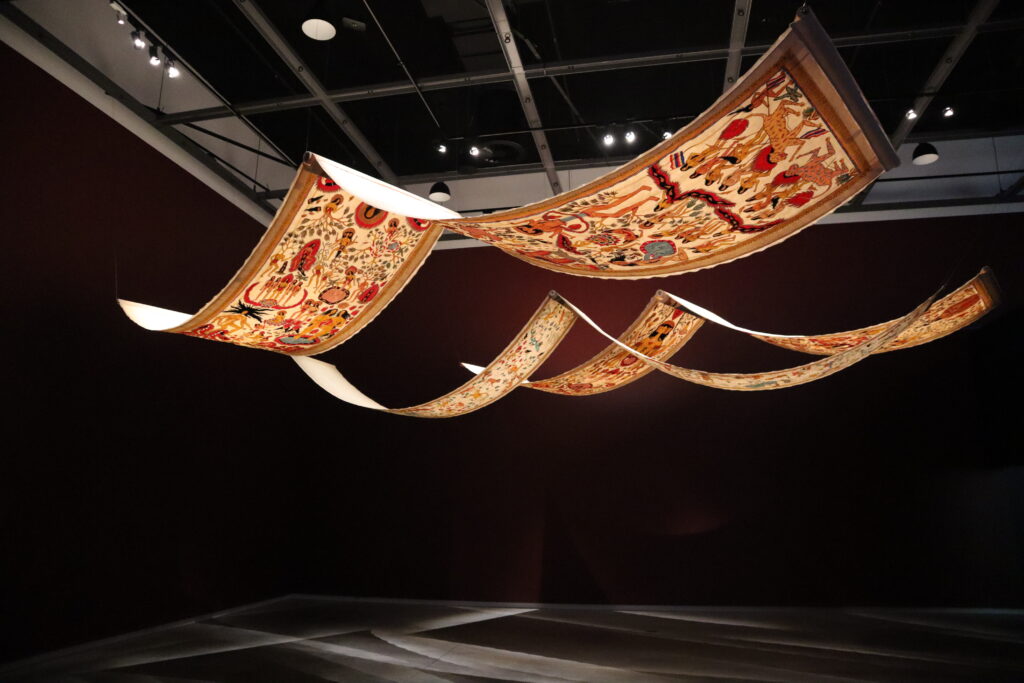Ten Thousand Suns, 24th Biennale of Sydney, 9 March – 10 June 2024, Chau Chak Wing Museum at the University of Sydney, Australia
Image courtesy of David James

Timur Merah Project X: Bedtime Story, 2023
Acrylic on traditional Kamasan canvas, oak dowels
Commissioned by the Biennale of Sydney with generous support from the Australia-Indonesia Institute
Timur Merah Project IV: Tales of Nowhere, 2020
Acrylic on traditional Kamasan canvas, oak dowels
Commissioned by UOB for Children Art Space
MACAN Museum Jakarta, Indonesia 2020
Courtesy the artist and Yeo Workshop, Singapore
Citra Sasmita began researching patriarchal roots of modern Bali by looking to the literary and artistic canon of Indonesia, which broadly narrates male heroism and depicts women as romantic decorations. Through her Timur Merah Project, Sasmita creates counter-narratives that depict women as powerful and resistant actors who push back against a male gaze informed by colonial ideology.
Following the fall of the last Balinese kingdom in 1908, the Dutch administration introduced the policy of Baliseering. A strategy of cultural diplomacy intended to establish an ‘authentic’ Bali, the policy obliged the Balinese community to carry out their cultural practices under Dutch supervision. Javanese nationalists argued that the policy kept Bali as a ‘living museum’ that appealed to colonial aesthetics of the noble and exotic while obliterating any Balinese self-determination.
Balinese women, who for centuries were trafficked by the Dutch as particularly beautiful slaves, were often depicted in naturalistic portraits by colonial painters. In Timur Merah Project X: Bedtime Story and Timur Merah Project IV: Tales of Nowhere, Sasmita uses traditional Kamasan painting to reclaim the female figure as an active de-colonial agent challenging the exotic aesthetic heritage of Baliseering.
Citra Sasmita is a contemporary artist from Bali whose work focuses on unravelling the myths and misconceptions of Balinese art and culture. She is deeply invested in questioning a woman’s place in the social hierarchy and seeks to upend the normative construct of gender. Her whimsical compositions representing geographies of female figures and various natural elements are executed in the Kamasan Balinese painterly language that Sasmita has been developing in her practice. While rooted in mythological thinking with Hindu and Balinese-specific references, the scenes are equally part of the contemporary process of imagining a secular and empowered mythology for a post-patriarchal future.

